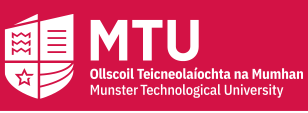ORCID
0000-0001-8131-4762
Abstract
Beneficial use of dredged sediments, either in harbours or waterways, is based on their potential as alternative resources. Such sediments can be considered as bulk materials for industrial needs, which is predicated on their current waste status or meeting end-of-waste constraints. They also can be an integral part of beneficial use projects using sediments as a bulk component, including civil engineering and landscaping. This is particularly important for beneficial use projects focusing on climate change effects mitigation, such as flood protection works, coastline defence or littoral urban areas redevelopment. When dredged sediment is used as a bulk material, its acceptability is based on an assumed homogeneity of its properties. On-site analyses allow pre-dredging detailed mapping at a denser scale than laboratory ones; monitoring dredgings during operations and during processing; and continuous control of their properties at the implementation site. This is currently possible only for a selection of inorganic analytes. When dredgings are part of a larger beneficial use project, on-site analyses facilitate first the baseline survey and the sediment source characterisation. Continuous monitoring of the sediment load allows a fast detection of contamination hot spots and their adequate management. Site survey via on-site instruments allow end users and communities to check themselves the contamination level, hence acceptability is better. On-site dredged sediment analyses monitor both building properties and environmental compliance; soil and sediment analyses at receiving sites; surface and groundwater, either for impact assessment or for monitoring works. On-site instruments provide immediate results and allow dynamic or adaptive sampling strategies, as well as allowing operational decisions in real time. Confirmation by laboratory analyses is required for validation, but on-site sample screening for laboratory analyses improves their efficiency. The present paper was developed on the basis of an earlier presentation, which it developed and updated extensively.
Disciplines
Civil and Environmental Engineering
DOI
10.3390/land11020274
Full Publication Date
2022
Publisher
MDPI
Funder Name 1
European Regional Development Fund
Award Number 1
3.5.161
Funder Name 2
European Regional Development Fund
Award Number 2
NWE 462
Funder Name 3
French Ministry for Research
Funder Name 4
French North Pas de Calais
Funder Name 5
Belgian Walloon region
Resource Type
journal article
Resource Version
http://purl.org/coar/version/c_970fb48d4fbd8a85
Access Rights
open access
Open Access Route
Gold Open Access
License Condition

This work is licensed under a Creative Commons Attribution 4.0 International License.
Alternative Identifier
https://www.mdpi.com/2073-445X/11/2/274
Recommended Citation
Lemière, B.; Laperche, V.; Wijdeveld, A.; Wensveen, M.; Lord, R.; Hamilton, A.; Haouche, L.; Henry, M.; Harrington, J.; Batel, B.; et al. On-Site Analyses as a Decision Support Tool for Dredging and Sustainable Sediment Management. Land 2022, 11, 274. https://doi.org/10.3390/land11020274


Publication Details
Land